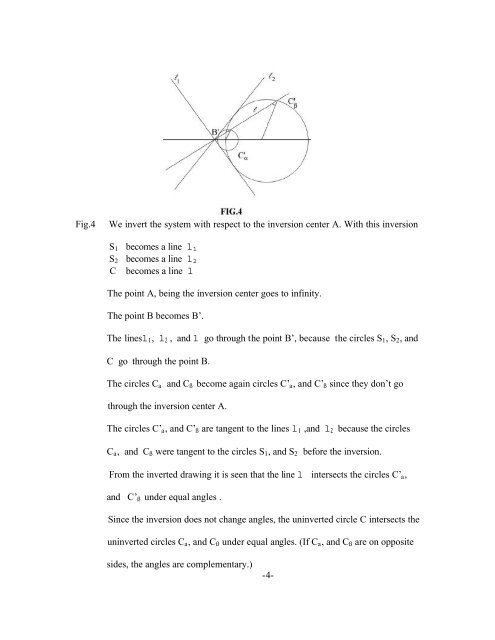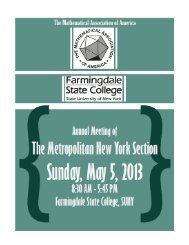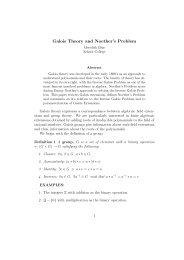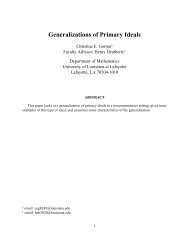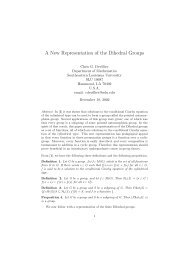Malfatti-Steiner Problem I. A. Sakmar, University of ... - MAA Sections
Malfatti-Steiner Problem I. A. Sakmar, University of ... - MAA Sections
Malfatti-Steiner Problem I. A. Sakmar, University of ... - MAA Sections
You also want an ePaper? Increase the reach of your titles
YUMPU automatically turns print PDFs into web optimized ePapers that Google loves.
Fig.4<br />
We invert the system with respect to the inversion center A. With this inversion<br />
S 1 becomes a line l 1<br />
S 2 becomes a line l 2<br />
C becomes a line l<br />
The point A, being the inversion center goes to infinity.<br />
The point B becomes B’.<br />
The linesl 1 , l 2 , and l go through the point B’, because the circles S 1 , S 2 , and<br />
C go through the point B.<br />
The circles C a and C ß become again circles C’ a , and C’ ß since they don’t go<br />
through the inversion center A.<br />
The circles C’ a , and C’ ß are tangent to the lines l 1 ,and l 2 because the circles<br />
C a , and C ß were tangent to the circles S 1 , and S 2 before the inversion.<br />
From the inverted drawing it is seen that the line l intersects the circles C’ a ,<br />
and C’ ß under equal angles .<br />
Since the inversion does not change angles, the uninverted circle C intersects the<br />
uninverted circles C a , and C ß under equal angles. (If C a , and C ß are on opposite<br />
sides, the angles are complementary.)<br />
-4-


